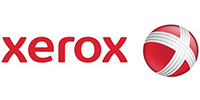
In order to get to central London from my home in Surrey, I drive to my favoured railway station (it has more services than my nearest station), park my car, buy a parking ticket, buy a train ticket and, when I get to the city, I then either take a cab or the underground to get my final destination.
This mundane story of one of my journeys is actually gold dust to city planners. It’s data like this that is the key to providing the seamless transportation network of the future.
Every aspect of our transportation data, from the roads we choose to drive on, to the tweets we send to our local railway network, form the foundation on which any new transportation service is built. There is an ocean of such data already at our fingertips. It simply requires a good system, and the technology tools to support it, to open a world of possibilities that will improve the transportation experience.
The promise of transportation data
For generations, the biggest challenge for city planners has been understanding the everyday issues faced by commuters, and identifying how their resources can map to those needs. Today, data gives city planners the power to make these types of connections far more quickly and easily.
Instead of the lengthy process of surveying drivers on their commuter experience, road sensors can tell us exactly how long journeys take, and where any delays occurred. Rather than run focus groups, organisations can view and respond to commuter sentiment shared on social media every minute of every day, providing the customer with instant feedback.
Data is beginning to transform transportation in cities around the world in the following ways:
- Enabling better connections between modes of transport for faster travel times.
- Reducing the cost and increasing the convenience of travel.
- Delivering better information through real-time data.
- Producing systems that are ready for the transport users of the future.
These benefits apply to the commuter just as much as the city planner. For those who are simply trying to get to work, the smart use of transport data can make travel more convenient and quicker, while also building a more environmentally-friendly and cost-efficient transportation ecosystem.
Data is key to the implementation of intelligent transport systems. For example, using both historical and current data, city planners can quickly determine the busiest roads, and the times that traffic is heaviest. Pair this with traffic signalling technology, and straightaway you’re able to update speed limits, parking costs or suggest diversions in real time, easing congestion and shortening journey times in the process.
The data overhaul
For those quietly collecting data from across their transport network, now is the time to put it to work. We’re at the start of what I believe will be a total overhaul of our urban transport systems, one that puts the user at the heart of the network and offers tailor-made travel services based on individual preferences.
We have everything we need to achieve the smarter, simpler transportation landscape that users believe their cities should be providing. Some European cities are only starting to discover the possibilities that data can bring, but there’s no doubt about it: data will be at the core of how we improve mobility in our cities and it is in the interest of every transport decision-maker to utilise it.
About Xerox
Xerox is helping change the way the world works. By applying our expertise in imaging, business process, analytics, automation and user-centric insights, we engineer the flow of work to provide greater productivity, efficiency and personalization. Our employees create meaningful innovations and provide business process services, printing equipment, software and solutions that make a real difference for our clients and their customers in a 180 countries. On January 29, 2016, Xerox announced that it plans to separate into two independent, publicly-traded companies: a business process outsourcing company and a document technology company. Xerox expects to complete the separation by year-end 2016.




Comments
There are no comments yet for this item
Join the discussion